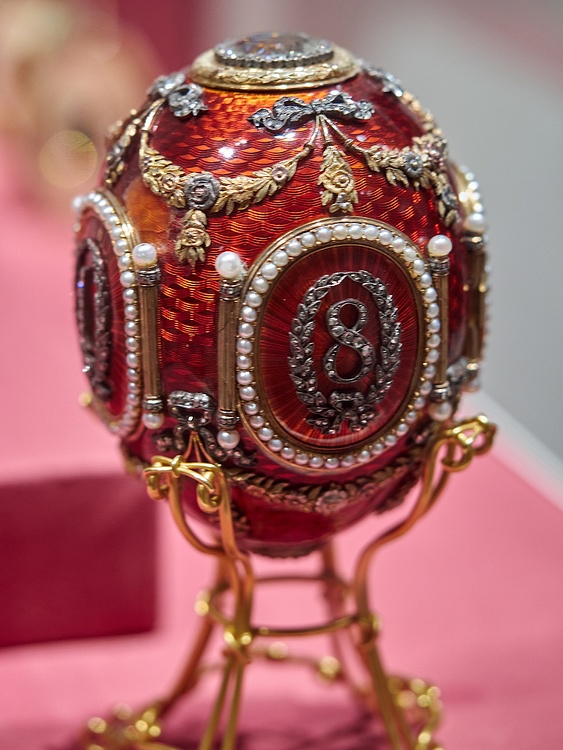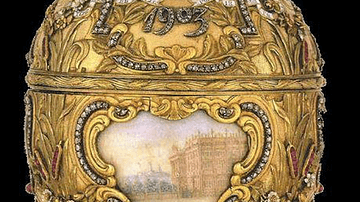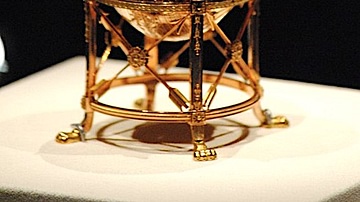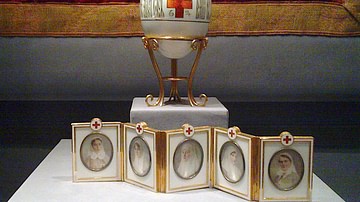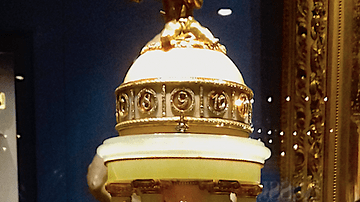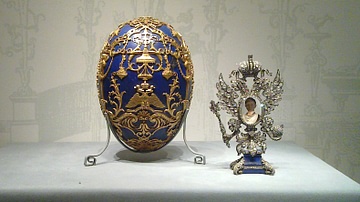Illustration
The 1893 Imperial Caucasus Egg by Peter Carl Fabergé (1846-1920). The egg was given by Tsar Alexander III (r. 1881-1894) to his wife Marie Feodorovna. It commemorates their son Grand Duke George Alexandrovich's time in Abastumani in the Caucasus. The egg is made of gold, silver, and platinum with red enamel. There are additional decorations using diamonds, pearls, crystal, and ivory. Four panels open to reveal miniature paintings. Each door has a number which together form '1893'. The egg measures 9.2 cm (3.6 in) in height.
Metropolitan Museum of Art, New York.
Cite This Work
APA Style
Petts, J. (2021, May 03). Imperial Caucasus Egg by Fabergé. World History Encyclopedia. Retrieved from https://www.worldhistory.org/image/13957/imperial-caucasus-egg-by-faberge/
Chicago Style
Petts, James. "Imperial Caucasus Egg by Fabergé." World History Encyclopedia. Last modified May 03, 2021. https://www.worldhistory.org/image/13957/imperial-caucasus-egg-by-faberge/.
MLA Style
Petts, James. "Imperial Caucasus Egg by Fabergé." World History Encyclopedia. World History Encyclopedia, 03 May 2021, https://www.worldhistory.org/image/13957/imperial-caucasus-egg-by-faberge/. Web. 29 Jun 2025.
